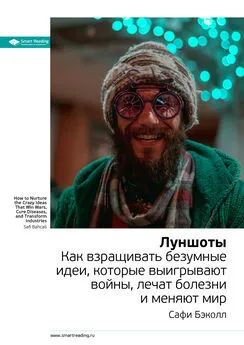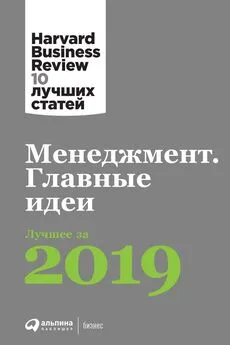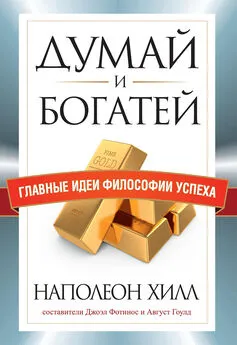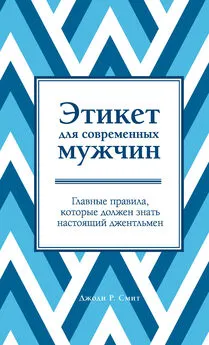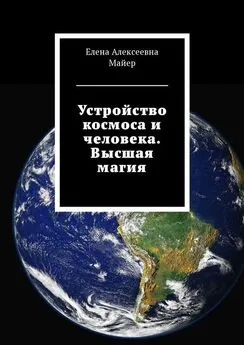Приямвада Натараджан - Карта Вселенной [Главные идеи, которые объясняют устройство космоса]
- Название:Карта Вселенной [Главные идеи, которые объясняют устройство космоса]
- Автор:
- Жанр:
- Издательство:Альпина нон-фикшн
- Год:2019
- Город:Москва
- ISBN:978-5-0013-9026-8
- Рейтинг:
- Избранное:Добавить в избранное
-
Отзывы:
-
Ваша оценка:
Приямвада Натараджан - Карта Вселенной [Главные идеи, которые объясняют устройство космоса] краткое содержание
Астрофизик Приямвада Натараджан находится на переднем крае исследований, она в буквальном смысле создает карты Вселенной — схемы распределения темной материи. В своей книге Натараджан рассказывает об открытиях, изменивших наши представления о Вселенной в прошедшем веке, о науке, стоящей за ними, и о пути признания радикальных научных теорий; размышляет о том, почему новые идеи о Вселенной и нашем месте в ней часто встречают в штыки даже в научном сообществе. Ведь наука, всегда меняющаяся и неполная, какой она и должна быть, — это лучший способ понять нашу чудесную, таинственную Вселенную.
Карта Вселенной [Главные идеи, которые объясняют устройство космоса] - читать онлайн бесплатно ознакомительный отрывок
Интервал:
Закладка:
19. «Riccardo Giacconi — Facts», fact sheet for the Nobel Prize in Physics 2002, www.nobelprize.org/nobel_prizes/physics/ laureates/2002/giacconi-facts.html
1. Richard Panek, The 4 % Universe: Dark Matter, Dark Energy, and the Race to Discover the Rest of Reality (New York: Mariner Books, 2011), chapters 1–6.
2. For Fraunhofer’s biography see T. Hockey, ed., The Biographical Encyclopedia of Astronomers (Heidelberg: Springer, 2009), 388.
3. American Institute of Physics, «Spectroscopy and the Birth of Astrophysics», Center for History of Physics, www.aip.org/history/cosmology/ tools/tools-spectroscopy.htm
4. F. Zwicky, «Die Rotverschiebung von extragalaktischen Nebeln» [The redshift of extragalactic nebulae], translated by Friedemann Brauer, Helvetica Physica Acta 6 (1933): 110–27. For these translations, I have relied on Sidney van den Bergh, «The Early History of Dark Matter», Publications of the Astronomical Society of the Pacific 111, no. 760 (June 1999): 657.
5. Sinclair Smith, «The Mass of the Virgo Cluster», Astrophysical Journal 83 (1936): 23–31.
6. Tricia Close, «Lunatic on a Mountain: Fritz Zwicky and the Early History of Dark Matter» (master’s thesis, Saint Mary’s University, Halifax, Nova Scotia, 2001), http://library2.smu.ca/bitstream/handle/ 01/22390/close_tricia_masters_2001. PDF
7. «Kent Ford & Vera Rubin’s Image Tube Spectrograph Named in Smithsonian’s ‘101 Objects That Made America,’» Department of Terrestrial Magnetism, Carnegie Institution for Science, https://dtm.carnegiescience.edu/news/ kent-ford-vera-rubins-image-tube-spectrograph-named-smithsonians-101-objects-made-america; and Derek J. de Solla Price, Little Science, Big Science (New York: Columbia University Press, 1963), 70.
8. Dark matter particles — whatever they may be — are expected to move at low speeds and are hence referred to as cold.
9. Jon Agar, Science in the Twentieth Century — and Beyond (Cambridge: Polity, 2012), 164.
10. Antoine de Saint-Exupéry, The Little Prince, translated by Katherine Woods (New York: Harcourt Brace and World, 1943), 48; and John F. Fulton, «Robert Boyle and His Influence on Thought in the Seventeenth Century», Isis 18, no. 1 (July 1932): 77–102.
11. Albert A. Michelson and Edward W. Morley, «On the Relative Motion of the Earth and of the Luminiferous Ether», Sidereal Messenger 6 (1887): 306–10. Михельсон получил Нобелевскую премию по физике в 1907 г. за разработку интерферометра.
12. F. Zwicky, Morphological Astronomy (Berlin: Springer, 1957), 132. См. также: J. R. Bond and A. S. Szalay introduced its modern usage referring to cold, collisionless particles into the literature in «The Collisionless Damping of Density Fluctuations in an Expanding Universe», Astrophysical Journal 274 (1983): 443–68.
13. F. Zwicky, «On the Masses of Nebulae and of Clusters of Nebulae», Astrophysical Journal 86, no. 3 (1937): 237.
14. G. Soucail, «The Giant Luminous Arc in the Centre of the A 37 °Cluster of Galaxies», ESO Messenger 48 (June 1987): 43–44, available at http://adsabs.harvard.edu/abs/ 1987Msngr..48…43S
15. J. H. Oort, «Some Problems Concerning the Structure and Dynamics of the Galactic System and the Elliptical Nebulae NGC 3115 and 4494», Astrophysical Journal 91 (1940): 273.
16. F. D. Kahn and L. Woltjer, «Intergalactic Matter and the Galaxy», Astrophysical Journal 130 (1959): 705–17.
17. A. Wilson, «Zwicky: Humanist and Philosopher», Engineering and Science 37 (March — April 1974): 18.
18. Dennis Overbye, Lonely Hearts of the Cosmos (New York: Harper Collins, 1991), 18.
19. V. Rubin, K. Ford, and J. Rubin, «A Curious Distribution of Radial Velocities of ScI Galaxies with 14.0 ≤ M ≤ 15.0», Astrophysical Journal Letters 183 (1973): L111.
20. Интервью см.: Niels Bohr Library and Archives, American Institute of Physics, College Park, MD, www.aip.org/history-programs/niels-bohr-library/oral-histories/5920–2. Richard Panek describes Rubin’s work and contributions in detail in 4 % Universe, 25–53; см. также Alan Lightman and Roberta Brawer, Origins: The Lives and Worlds of Modern Cosmologists (Cambridge, MA: Harvard University Press, 1990), 291.
21. M. S. Roberts and R. N. Whitehurst, «The Rotation Curve and Geometry of M31 at Large Galactocentric Distances», Astrophysical Journal 201 (1975): 327–46.
22. J. Ostriker and J. P. E. Peebles, «A Numerical Study of the Stability of Flattened Galaxies: or, Can Cold Galaxies Survive?» Astrophysical Journal 186 (1973): 467.
23. J. Ostriker, J. P. E. Peebles, and A. Yahil, «The Size and Mass of Galaxies, and the Mass of the Universe», Astrophysical Journal Letters 193 (1974): L1; and Agris J. Kalnajs, «Halos and Disk Stability», in Dark Matter in the Universe: Proceedings of the 117th Symposium of the International Astronomical Union, ed. J. Kormendy and G. R. Knapp (Boston: Kluwer Academic, 1987), 289–99.
24. Virginia Trimble, «History of Dark Matter in Galaxies», in Planets, Stars and Stellar Systems, ed. Terry D. Oswalt, vol. 5, Galactic Structure and Stellar Populations, ed. Gerry Gilmore (New York: Springer, 2013), 1091–118.
25. George R. Blumenthal, S. M. Faber, Joel R. Primack, and Martin J. Rees, «Formation of Galaxies and Large-Scale Structure with Cold Dark Matter», Nature 311 (1984): 517; and S. D. M. White, C. S. Frenk, and M. Davis, «Clustering in a Neutrino-Dominated Universe», Astrophysical Journal Letters 274 (1983): L1; Vera Rubin, «The Rotation of Spiral Galaxies», Science 220 (June 24, 1983): 1344.
26. Thomas S. Kuhn, The Structure of Scientific Revolutions (Chicago: University of Chicago Press, 1962).
27. Richard Holmes, The Age of Wonder: How the Romantic Generation Discovered the Beauty and Terror of Science (New York: Vintage, 2010) 60–125.
28. A. Einstein, «Die Grundlage der allgemeinen Relativitätstheorie» [The foundation of the general theory of relativity], Annalen der Physik 49, no. 7 (1916): 769–822.
29. Arrigo Finzi, «On the Validity of Newton’s Law at a Long Distance», communicated by F. A. E. Pirani, Monthly Notices of the Royal Astronomical Society 127 (1963): 28, 30.
30. Jacob Bekenstein and Mordehai Milgrom, «Does the Missing Mass Problem Signal the Breakdown of Newtonian Gravity?» Astrophysical Journal 286 (1984): 7–14; and Milgrom, «Does Dark Matter Really Exist?» Scientific merican, August 2002, 42.
31. Jean-Paul Kneib and Priyamvada Natarajan, «Cluster Lenses», Astronomy and Astrophysics Review 19 (2011): article 47.
1. H. G. Wells, The First Men in the Moon (London: Newnes, 1901).
2. Roger Babson, «Gravity — Our Enemy Number One», reprinted in H. Collins, Gravity’s Shadow: The Search for Gravitational Waves (Chicago: University of Chicago Press, 2010), 828–29; cписок лауреатов премии Фонда можно найти на сайте www.gravityresearchfoundation.org/ winners_year.html
3. Richard Panek, The 4 % Universe: Dark Matter, Dark Energy, and the Race to Discover the Rest of Reality (New York: Mariner Books, 2011), xv; книга содержит детальное описание поисков сверхновых и открытия темной энергии.
4. Edward N. Zalta, ed., The Stanford Encyclopedia of Philosophy, s.v. «New ton’s Philosophy», by Andrew Janiak, last revised May 6, 2014, http://plato.stanford.edu/archives/ sum2014/entries/newton-philosophy/; and Panek, 4 % Universe, 60
5. Panek, 4 % Universe, 60; and Isaac Newton to Richard Bentley, February 25, 1692, THEM00258, 189. R.4.47, fols. 7–8, Newton Project, Trinity College Library, Cambridge, U. K., доступно с 15 сентября 2015, www.newtonproject.sussex.ac.uk/ catalogue/record/THEM00258. Латинский текст и английские переводы в главных изданиях приводятся на сайте http://isaacnewton.ca/newtons-general-scholium/, part of the Newton Project Canada. См. также книги: Philosophiae naturalis principia mathematica (Cambridge: Cambridge University Press, 1687); and Isaac Newton’s Philosophiae naturalis principia mathematica: The Third Edition,1726, with Variant Readings, ed. A. Koyre and I. B. Cohen с участием A. Whitman (Cambridge, MA: Harvard University Press, 1972).
6. W. Baade, «The Absolute Photographic Magnitude of Supernovae», Astrophysical Journal 88 (1938): 285–304.
7. A. S. Eddington, The Mathematical Theory of Relativity (Cambridge: Cambridge University Press, 1923) 119–46, 152–61; and Eddington, The Expanding Universe (Cambridge: Cambridge University Press, 1933), 102.
8. A. Einstein and W. de Sitter, «On the Relation Between the Expansion and the Mean Density of the Universe», Proceedings of the National Academy of Sciences 18 (1932): 213.
9. Более подробно с проблемой всех измеряемых космологических параметров можно ознакомиться в книге: Рис М. Всего шесть чисел. — М.: Альпина нон-фикшн, 2018. Гл. 6, 7.
10. Allan Sandage, «The Ability of the 200-Inch Telescope to Discriminate Between Selected World Models», Astrophysical Journal 133 (1961): 389.
11. Отношение Киршнера к проблеме открытия темной энергии изложено в его книге The Extravagant Universe: Exploding Stars, Dark Energy and the Accelerating Cosmos (Princeton: Princeton University Press, 2002), 158–262.
12. Panek, 4 % Universe, 71.
13. S. Perlmutter, G. Aldering, M. Della Valle, S. Deustua, R. S. Ellis, S. Fabbro, A. Fruchter, et al., «Discovery of a Supernova Explosion at Half the Age of the Universe», Nature 391 (1998): 51.
14. A. G. Riess, A. V. Filippenko, P. Challis, A. Clocchiatti, A. Diercks, P. M. Garnavich, R. L. Gilliland, et al., «Observational Evidence from Supernovae for an Accelerating Universe and a Cosmological Constant», Astronomical Journal 116, no. 3 (1998): 1009–38.
15. Panek, 4 % Universe, 158–59.
16. James Glanz, «Exploding Stars Point to a Universal Repulsive Force», Science 279, no. 5351 (January 30, 1998): 651–52, available at www.sciencemag.org/content/279/5351/ 651.summary?sid=c2d42164-3577-4952-9687-77cf531d4729
17. Panek, 4 % Universe, 163; Marcia Bartusiak, Archives of the Universe: 100 Discoveries That Transformed Our Understanding of the Cosmos (New York: Vintage, 2004), 608–11.
Читать дальшеИнтервал:
Закладка:
![Обложка книги Приямвада Натараджан - Карта Вселенной [Главные идеи, которые объясняют устройство космоса]](/books/1075278/priyamvada-nataradzhan-karta-vselennoj-glavnye-idei.webp)



